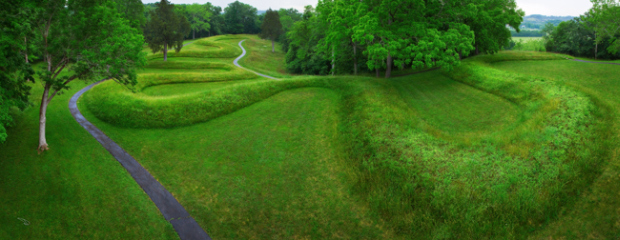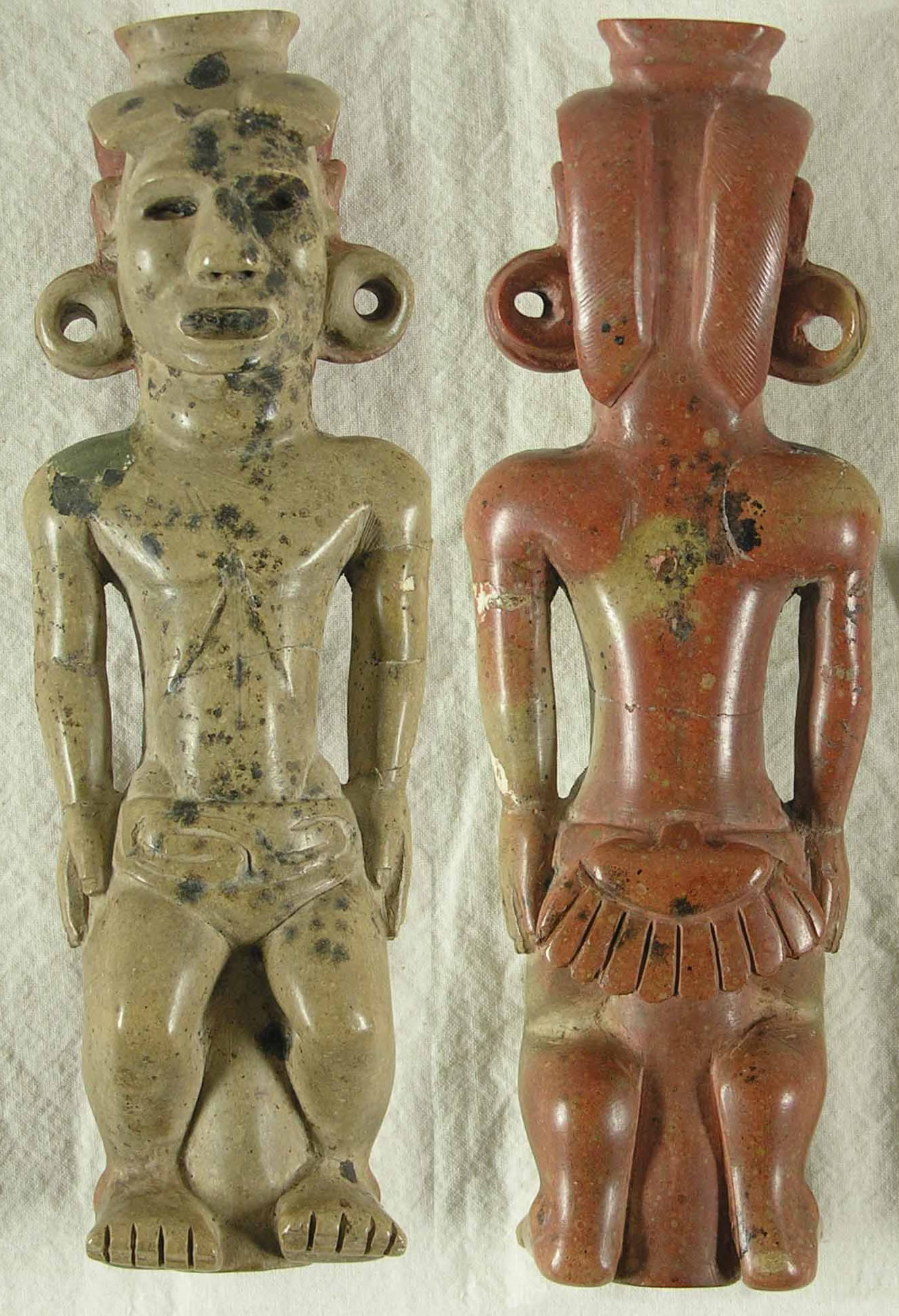Dotted across North America are more than 100,000 earth mounds, dispelling the early settlers’ belief that no previous culture of any significance existed on that continent. Now aerial photography has offered conclusive proof that innovative and visionary peoples lived here as early as 1000 BC.
When European explorers first ventured across the vast untamed wilderness of North America during the 16th and 17th centuries, they found no trace of prehistoric culture outside Mexico. The tribes of semi-nomadic Indians they encountered had apparently never been geographically settled, and as a result had left behind neither buildings nor sites containing cultural artefacts. In fact, it was not until the colonists reached the Ohio and Mississippi river valleys in the 18th century that they came across unequivocal, man-made evidence of the continent’s former inhabitants.
The proof came in the form of earth mounds. These vary in size, building method, shape and function, and were constructed over a long time span by a number of different peoples. So far, more than 100,000 have been identified. Shapes range from simple tumuli and elongated wall-like works to complex conical and pyramid-shaped structures.
The smallest earth mounds cover less than 1 acre (0.4ha); the largest, Monk’s Mound near present-day St Louis, has a 16 acre (6.4ha) rectangular base – larger than the Great Pyramid of Giza – and is 100ft (30m) high. Unique to North America are the so-called effigy mounds, built to represent human, bird or animal forms.

Many of the effigy mounds, including Serpent Mound in Ohio, were symbolic. Serpent Mound’s symbolism is disputed, but according to one theory the snake represents a solar eclipse in which the separate oval mound near the head (usually referred to as the ‘egg’) represents the sun, which is being attacked by the snake.

The builders of the earth mounds also used them as foundations for other structures, including temples and fortresses. The vast majority of mounds, however, were tombs. Sometimes the mound was built over a funerary container, simply to cover an existing burial place. At others, a completely new site was excavated. A pit, large enough to hold between one and three bodies, was dug and lined with wooden logs on which the bodies were placed. Alternatively, the bodies were laid out on the logs on the ground. a pole-and-wire construction supported a covering of bark, which was in turn overlaid with the earth or stones that comprised the mound.
Some of the burial mounds were found to contain objects that the dead might have been thought to need in an afterlife. These included axes, obsidian spearheads, stone maces; jewellery and precious items such as shell beads, copper-covered masks, mica mirrors and freshwater pearls. The paraphernalia of everyday life – textiles, carved pipes and conch-shell drinking cups – has also been unearthed.
About 1500 years ago, Native Americans in Georgia, possibly associated with the Hopewell people, moved tons of boulders to construct a huge bird effigy – its wingspan is 120ft (36.5m) – from piled stones. Perhaps the most remarkable feature of effigy mounds is the concept that lay behind them: they can only be seen properly from the air.
The mounds were created by three separate peoples. The earliest builders, who flourished from around 1000 to 100 BC, were the Adena. They had an almost obsessive preoccupation with death, and their mounds primarily contain graves and grave goods, including objects in copper and stone, such as pipes and decoratively incised tablets.
The Adena were adept stone carvers. This Bin (20cm) long tobacco pipe was carved by an Adena craftsman 3000 years ago, and found in an Ohio earth mound. It depicts a human figure wearing earrings and a loin cloth. The mouthpiece is at the top of the head and the tobacco bowl is between the feet.

Although the Hopewell people, whose mounds date from about 100 BC, kept many Adena traditions, their culture was more advanced. For almost four centuries their influence extended over much of present-day Indiana, Michigan, Wisconsin, Iowa and Missouri. The Hopewell were also successful traders. The copper they used for their ornaments and armour came from around Lake Superior. Knives were carved from obsidian – a volcanic rock that has been traced to Yellowstone National Park 1000 miles (1600km) away – and the mounds contained sharks’ teeth that must have come from the Gulf of Mexico.

The tradition of mound-building was continued after the decline of Hopewell society by the Mississippians, who flourished after AD 700. Their great soil mounds were like the pyramid temples of the Mayans and Aztecs, but used less often as graves, and their 12th-century city Cahokia has been called America’s first metropolis north of the Rio Grande. Today, Monk’s Mound is all that remains of the city that sheltered 30,000 people. Some 100 other earth mounds supporting official residences and temples, and housing the dead, were once visible from its summit.
Homes built from clay-covered poles protected a society that lived by growing maize, squashes and beans, and by hunting and fishing. Cahokia offers the clearest evidence so far of the sophisticated culture that existed at least 300 years before the European ‘discovery’ of North America.
-end-




































